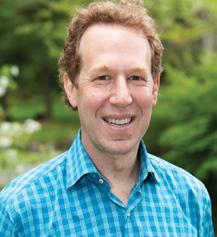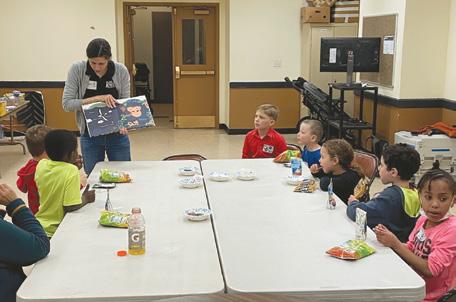
2 minute read
Marking Loss in the Jewish Community
BY RABBI ALEX LAZARUS - KLEIN
As a trained chaplain, there is one saying I dislike more than all others: “God never gives us more than we can handle.” Walking around the ICU at Albert Einstein Hospital in Philadelphia fifteen years ago, I would see countless patients and families for whom this particular aphorism was not only false but potentially harmful. Being overwhelmed by circumstances is a normal human condition and one that most of us encounter many times in our lives.
This was certainly true last August, when Salman Rushdie was stabbed by an assailant as he was about to give a talk in a public lecture at the Chautauqua Institution. It happened on a Friday morning, and I heard the news just as I was packing my bags to head up there to lead services with Rabbi Cantor Penny Myers at the Hebrew Congregation of Chautauqua. I arrived at Chautauqua later in the afternoon to find a normally bustling campus in stunned silence. People there, many of whom had witnessed the attack, were consoling one another on the side of the road.
It was not lost on me that only a week before the Jewish world had marked Tisha B’Av, a day commemorating the destruction of both the first and second Temples. Even thousands of years later, Jews still openly weep about the experience as described in the Book of Lamentations. Like many liberal Jews, I have struggled with the symbolism of the day. The Temple period with its animal sacrifices and intensive religious hierarchy is not something I would desire to return to. And yet, I am touched by the ultimate message of Tisha B’Av: grief and loss do not end in a day or a year, or even a century; sometimes grief can extend for millennia.
Here in Buffalo, we have had what Erie County Executive Mark Poloncarz said when reflecting about this past May 14th, that it was “the worst year in Buffalo’s history.” In addition to the stabbing of Rushdie, which thank God he survived, we had the mass shooting at the Tops Market on Jefferson Avenue, two major blizzards that made international news and left more than forty people dead, and the near death of Buffalo Bills’ player Damar Hamlin on the football field.
Thousands of years ago, the rabbis of the Talmud constructed a prayer to say for bad tidings: Baruch Dayan Ha’Emet, Blessed be the Judge of Truth (Mishnah
Berakhot 9:2). By “Emet/Truth,” I believe they meant reality. In this world we live in, sometimes calamitous things occur. Judaism teaches that instead of shying away from them, pretending we are strong enough to face them, we must fully mourn what happened to us. More than any other religion I know, Judaism has constructed a systemic approach to healing from grief: we bury our dead quickly, sit shiva, hold shloshim gatherings marking the first month, conduct unveilings after the first year, and recite Mourner’s Kaddish on the Yahrzeit anniversary of death every year subsequently.
This year when I return to the Chautauqua Institution on the weekend of August 4-5, the sadness that I felt last year will no doubt still somewhat be present, just as it will when we mark Tisha B’Av on July 26 and 27. Baruch Dayan Ha’Emet, Blessed be the Judge of Truth, we say to one another. May we have the strength to face all the challenges life puts before us, and may we do so together.

Rabbi Alex Lazarus-Klein is Rabbi at Congregation Shir Shalom and a Jewish Educator for the Federation’s Jewish Community Relations Council.


This past spring, families from the Jewish community joined together with families from Pilgrim St. Luke’s United Church of Christ for the first gathering in a yearlong initiative. Buffalo was one of three communities to receive a PJ Library Engagement Grant through the Harold Grinspoon Foundation to build multifaith family partnerships. During the first gathering, participants shared stories of how their faith teaches them to take care of our planet. The children began to build new friendships, and the adults did as well.










